|
|
|
GALLERY CONTINUED
PAGE FORTY-SEVEN
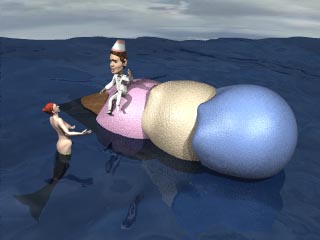
Stereoscopic 3D animation was fascinating to me for a very long time. When does it stop being a diorama? What makes a great diorama? The IMAX people have been boosters of large screen 3D because a big screen seems to make a big difference with stereoscopic 3D movies. Stereoscope users have known this for years, but there are other subtle differences between stereoscopes and large screens.
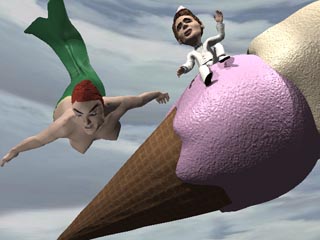
When does character identification take place? If the same spatial cues for 2D are applied to 3D, where are there disconnects, and why? A roller coaster ride in 2D gives an impression of speed and space, a roller coaster in 3D gives a strong sense of height. Where 2D is involved with practical spatial interpolation, does 3D leap to implied temporal and animation relationships?
Or is this another example of 2D/3D tradeoff's? Consider, the professionally lit cookbook has highlight and shadow placesd so that looking at highlights makes detail appear more for one eye than another, and the eye then adjusts for shadow detail, getting more information, confirming the same spatial cues even more. But it is arrtificial 2D information, based partly on natural contour, partly on lighting and film contrast, and sometimes on the deliberate effort of digital "airbrush" artists. Bluish backgrounds, light falloff, and animation all contribute their 2D spatial cues, but when stereoscopic 3D is added, these cues then "compete" with it. Possibly, they "resonate" with the 2D cues, where one set of values competes with another. Perhaps this is why the roller coaster scene shifts from speed and distance to height.
There is a slight vertical stereoscopic effect which may be emphasized with lighting, but it would appear to be a lot of trouble for a fairly subtle effect.
CGI is allowing stereoscopic artists to test a lot of hypotheses and prove ideas without going to the poor farm. In prior pages, I've outlined some elements I think really work well with stereoscopic 3D. Also, apparently, in the same way boring moments add nothing to the taste of food, boring moments add very little stereoscopic depth sensoral encouragement.
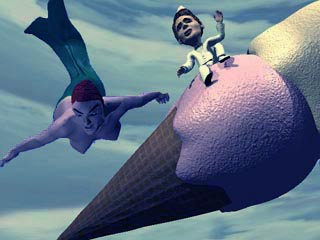
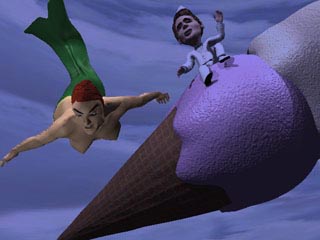
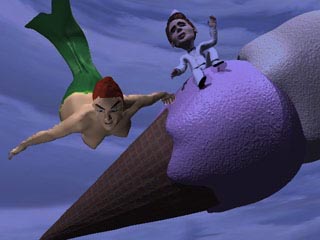
When I was an avid fan of stereoscopic 3D, scrounging for pair-able cameras and shooting any old thing, a lot of energy got burned up in precocious guessing as to what was being done or could be done. Theatrical directors devote a lot of attention to what is implied by a given position on stage; interior directors have a toolset that is commonly ignored by cinematographers who are trying to compose for twenty inch and twenty foot flat projection at the same time. A lot of things are different, and yet the experience is more like reality, so what looks good, looks good.
This may help us appreciate the intense visuals we encounter.
Puppetry and puppet films have a lot to offer, as do sculptures by Picasso, Moore, Duchamp, Erte, and the currents like T.Gall.
< BACK . . . . . . . . . . . . . . < HOME > . . . . . . . . . . . . . . NEXT >